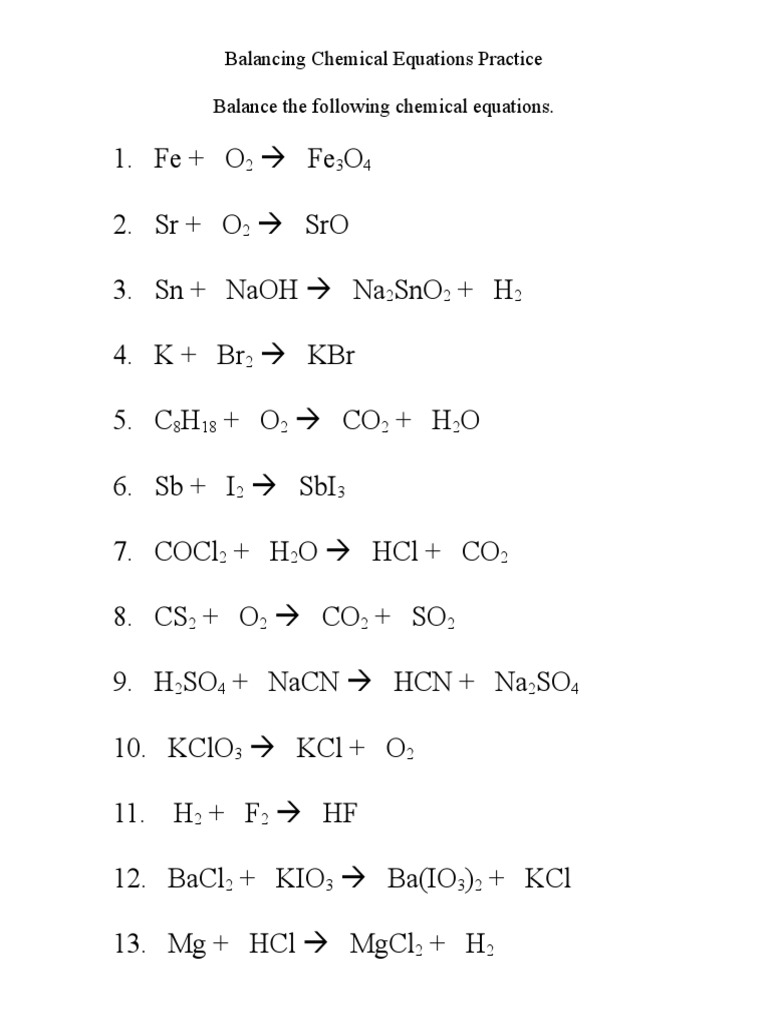Chemical equations balancing is a fundamental skill in chemistry that allows us to understand the process of chemical reactions. Balancing chemical equations involves making sure that the number of atoms of each element is the same on both sides of the equation. This ensures that the law of conservation of mass is obeyed, which states that matter cannot be created or destroyed in a chemical reaction.
When balancing chemical equations, it is important to follow a systematic approach. Start by writing down the unbalanced equation and then balance the atoms one at a time by adjusting the coefficients in front of the chemical formulas. It may take some trial and error to find the correct coefficients that balance the equation, but with practice, it becomes easier to identify the correct ratios.
Here are some example chemical equations that require balancing:
1. H2 + O2 → H2O
2. Fe + O2 → Fe2O3
3. C3H8 + O2 → CO2 + H2O
Now, let’s take a look at the answers to the balancing worksheet:
1. 2H2 + O2 → 2H2O
2. 4Fe + 3O2 → 2Fe2O3
3. C3H8 + 5O2 → 3CO2 + 4H2O
By practicing with these worksheet answers, you can improve your skills in balancing chemical equations and gain a better understanding of how reactions occur at the molecular level. Remember to always check your work and ensure that the number of atoms of each element is the same on both sides of the equation.
In conclusion, balancing chemical equations is an essential skill for anyone studying chemistry. By following a systematic approach and practicing with worksheet answers, you can improve your ability to balance equations accurately. Understanding the principles of chemical reactions will allow you to predict the outcomes of reactions and analyze the changes that occur in matter. Keep practicing and honing your skills to become proficient in balancing chemical equations.
